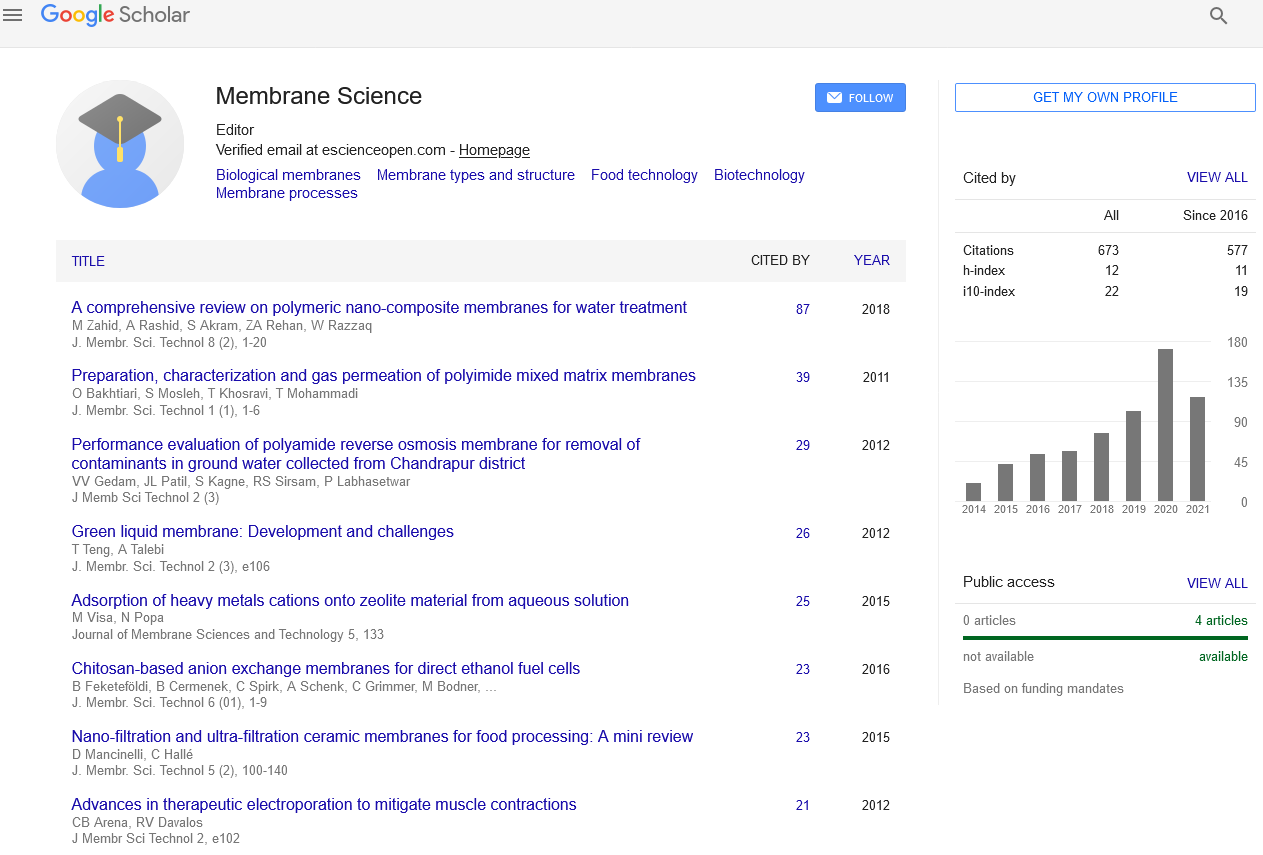Indexed In
- Open J Gate
- Genamics JournalSeek
- Ulrich's Periodicals Directory
- RefSeek
- Directory of Research Journal Indexing (DRJI)
- Hamdard University
- EBSCO A-Z
- OCLC- WorldCat
- Proquest Summons
- Scholarsteer
- Publons
- Geneva Foundation for Medical Education and Research
- Euro Pub
- Google Scholar
Useful Links
Share This Page
Journal Flyer

Open Access Journals
- Agri and Aquaculture
- Biochemistry
- Bioinformatics & Systems Biology
- Business & Management
- Chemistry
- Clinical Sciences
- Engineering
- Food & Nutrition
- General Science
- Genetics & Molecular Biology
- Immunology & Microbiology
- Medical Sciences
- Neuroscience & Psychology
- Nursing & Health Care
- Pharmaceutical Sciences
Abstract
Effects of Intracellular Zinc Chelator In Vivo on Taurine Transport,Taurine Concentrations and Taurine Transporter in Rat Retina Cells
Asarí Márquez, Mary Urbina, Manuelita Quintal, Francisco Obregón and Lucimey Lima
Taurine and zinc, highly concentrated in the retina, have neurotrophic effects in the central nervous system. Zinc modulates Na+/Cl- dependent transporters, such as those of dopamine and taurine (TAUT) in vitro, although there is no evidence of in vivo effects of zinc. The objectives of the present study were to evaluate the consequences of zinc deficiency on taurine levels and transport, and mRNA levels of TAUT in rat retina. Various concentrations of the intracellular zinc chelator, N,N,N,N-tetrakis-(2-pyridylmethyl) ethylenediamine (TPEN), dissolved in dimethylsulfoxide, were administered intraocular for dose selection: 1, 2.5 and 5 nM (12.5, 31.25 and 62.5 nM final concentrations). Dilution in the eye is approximately 25 times. It is taking into account the volume of the eye, 12.5 ?l). Retinas were dissected 3, 5 and 10 days later. Zinc was determined by spectrophotometry. TPEN administration, 5 nM, decreased zinc in 67% at 5 days. Taurine levels, determined by high performance liquid chromatography with fluorescence detection, were 65.96 � 4.73 nmoles/mg protein in tissue, 44.34 � 5.55 in isolated cells, and in 6.63 � 1.12 in cell membranes. Capacity of taurine transport, using [3H]taurine, was decreased in 38% and affinity was increased in 50% after TPEN. mRNA levels of TAUT, by RT-PCR, were diminished in 50% by the chelator. Optimal concentrations of zinc are necessary for the equilibrium of taurine system in the retina, which involves concentrations of taurine, taurine transport and TAUT mRNA levels.


